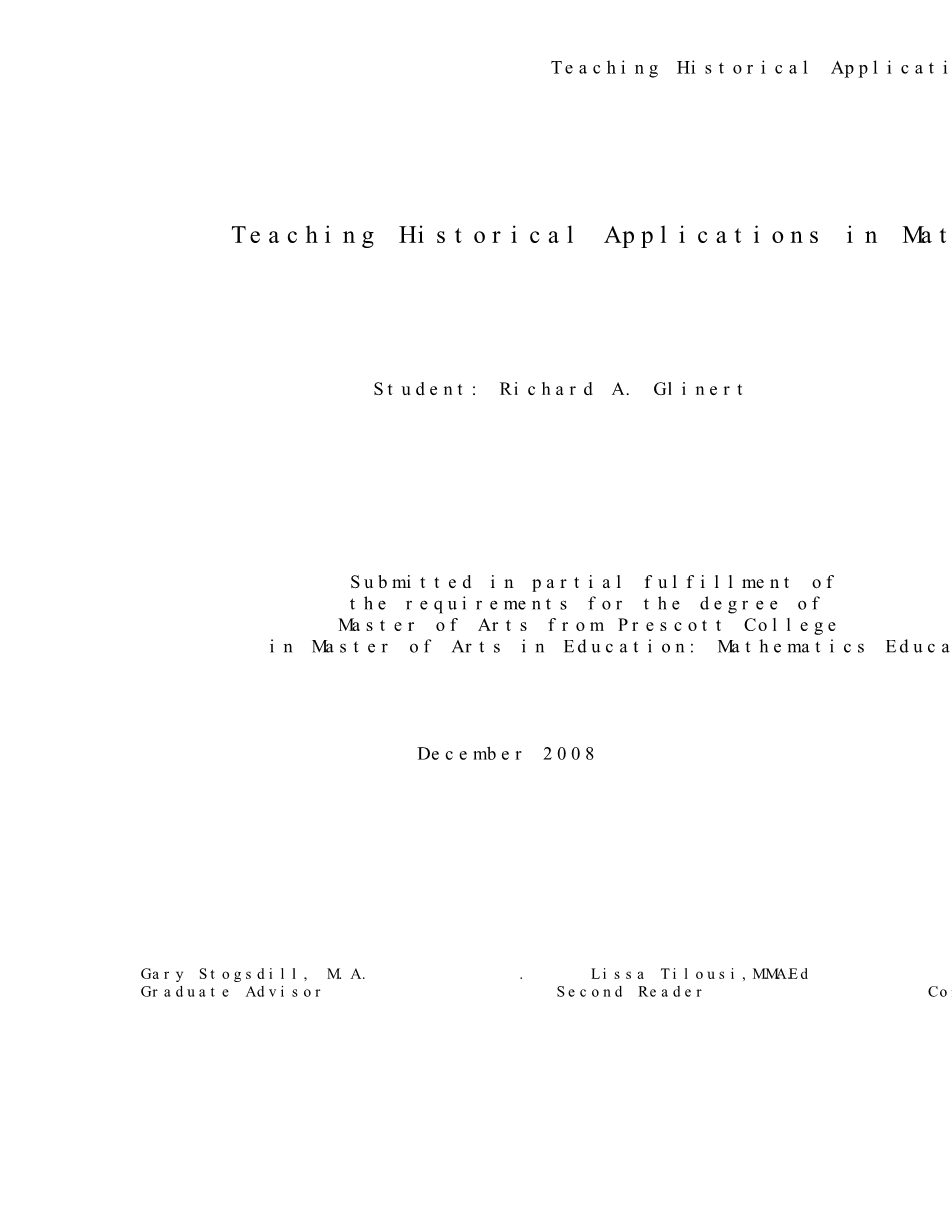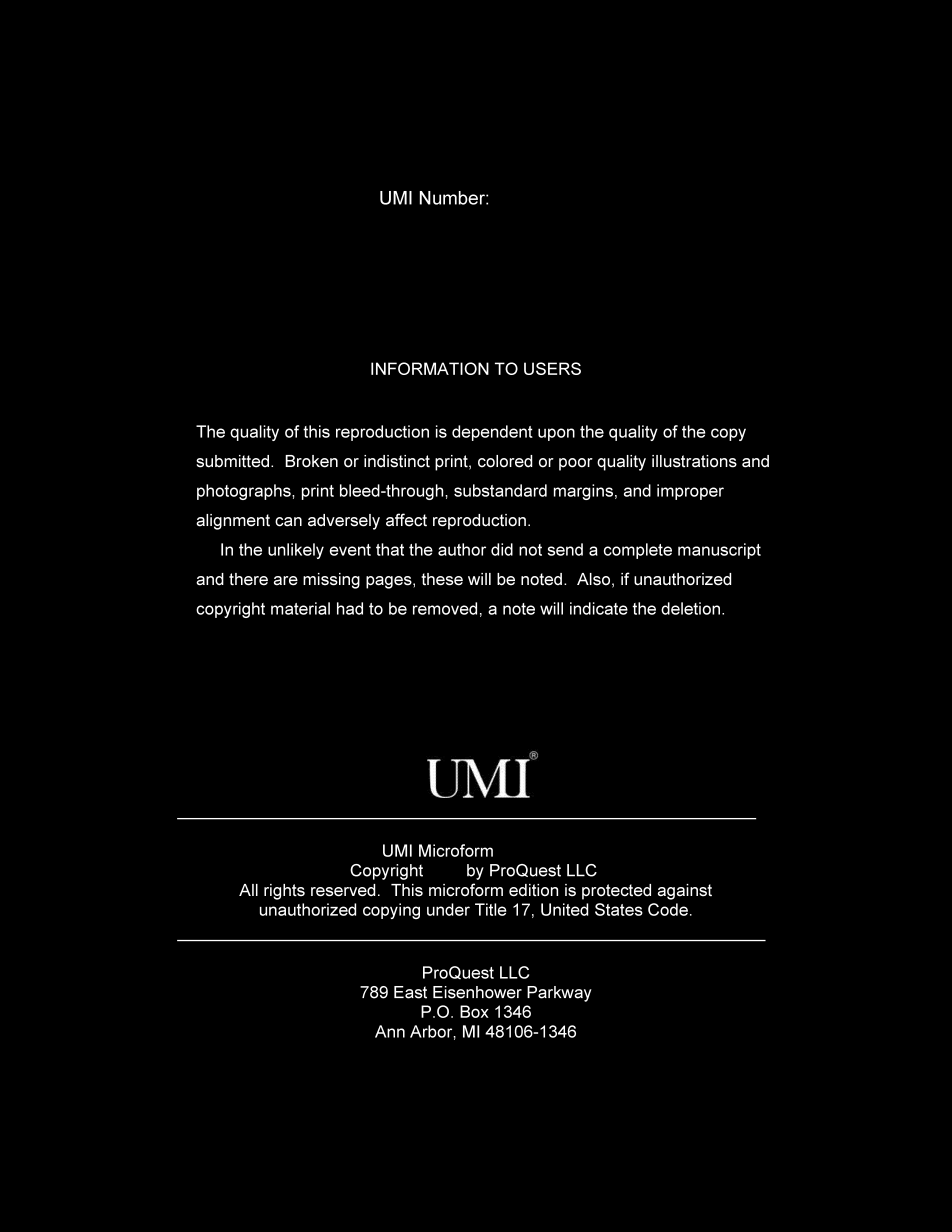本科毕业设计(论文)
外文翻译
Teaching Historical Applications in Mathematics
作者:Richard A. Glinert
国籍:Australia
出处:Prescott College
Chapter 2 - Overview of the History of Mathematics
The concept of mathematics begins with the idea that it is a science and that it involves the use of numbers to perform certain operations, functions, measurements, etc. But the study of mathematics must begin with the development of a number system, the language of the science, and that development to our present system is in itself a lengthy inquiry which encompasses multiple millennia. It could be said that the history of the number systems has a lengthier shadow than the actual use of those systems. The science of mathematics has developed over time based on the needs of the society and the desire to quantify and qualify statements or suppositions.
While researching the History of Mathematics I found an unusual distribution of literature in our local towns on this subject. The local high schools, community college and libraries contained very little in print and what was available tended to be between forty and fifty years old. The local four year college that specialized in aeronautics had a massive library on the subject due to its relevance to the studies in this field and the material tended to be newer in both publication and condition. As I went online to review the topic, I was further surprised to see the lack of current materials on the subject and the hit or miss approach in the college courses available.
It is an oversimplification to break down almost 20,000 years of development in the field of mathematics, but for expedience I am using seven time periods which are themselves combinations of many other subgroups. The first two clearly contributed to the language of math, numbers, while the second two periods showed the development of the science of mathematics. The final two are briefly discussed because they ushered in the more modern periods which reflect studies done on higher order concepts that are not relevant to the teaching of mathematics at the middle and high school grade levels. For this reason they are noted for historical context only, but they are distinct in their contributions to mathematics.
The Earliest History: Oriental, Babylonian and Mayan
The need for mathematics must have had its origin in the concepts of survival, possession of land, crops or animals, and basically keeping track of a personal or tribal inventory. To look back in the storage cave and notice that the stores of food supplies are down to the point of several days or weeks or months would have required some computations involving addition, subtraction and division. Simple tallies such as the use of fingers, sticks, small stones and even marks in the dirt were combined most likely with rudimentary algebra and geometry which were needed to keep track of land owned, probable distances and all of the issues of trade that went along with crops and livestock (Seidenberg, 1962). A frustrating development in this segment of history is that the record keeping regarding these details was not an important issue so we are left to surmise based on the evidence that remains. A secondary problem is that each country or region, more than likely, had different guidelines based on available tally objects such as seashells versus stones or writing in dirt compared to scratching on wood or what might have been an available resource. Prior to the classical accounting for mathematics and language, spatial data placed in a permanent form through visual symbolic systems, starting with engraved bones and rock. According to drsquo;Errico (1998) the formalizing of data and the subsequent retrieving of information that was not naturally intuitive, increased with complexity. Morphological analysis of late Paleolithic artifacts demonstrate the correlation to a primary mathematical knowledge with permanent storage of information prior to the advent of writing systems; marking bone, antler or mobiliary rock artifacts appear to have been a way of making exact representations of numeration via counting and incising, through one-to-one correspondence, the notches with quantity (Hawkes, 1976). French artifacts from the Solutrean include rib bones from extinct wooly rhinos, dated between 22,000-17,000 years before present; these incised bones posses hundreds of lines, made with the same point, on the concave side indicating a tally system exceeding hundreds in a repetitive demonstration of organized counting (Kline, 1972). Although an understanding of complex number systems were not present in the 20,000 BCE era, an expansive knowledge of angles was expressed through the production of advanced bifacial tools formed from rock. Understanding the chemical composure and direction a rock would flake when pressure was applied, indicates advanced knowledge of rock chemistry and the chemical relation to the formation of natural angles (drsquo;Errico, 1995). French Solutrean tools indicated this knowledge (Hawkes, 1976), synthesized through the creation of tools and the reworking of broken tools with respect to the core of the lithic objects discovered and analyzed by scientists in the modern era.
We have little evidence demonstrating the advancement of numeric knowledge due to a lack of cohesive writing systems from 20,000 to 5,000 years before the birth of Christ. Early history dating back to 3,000 BCE suggests that Western Asia and India showed tabulations that would account for some sort of numerical system, but the lack of the all important key has left these re
剩余内容已隐藏,支付完成后下载完整资料


英语原文共 129 页,剩余内容已隐藏,支付完成后下载完整资料
资料编号:[271989],资料为PDF文档或Word文档,PDF文档可免费转换为Word


